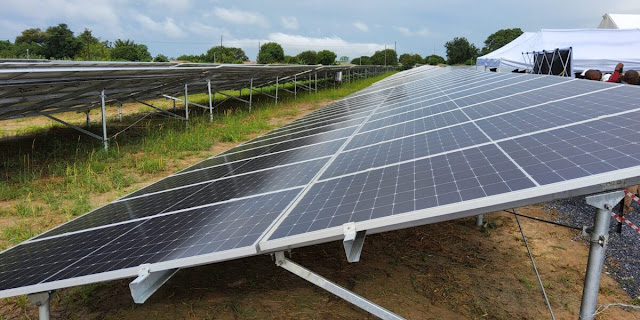Zambia Embraces Solar Energy with Historic Chisamba Plant

Zambia took a monumental step toward energy sustainability with the commissioning of the 100MW Chisamba Solar Plant, the largest of its kind in the nation. Launched by President Hakainde Hichilema, this massive solar farm not only powers residential communities but also supports major industrial operations like First Quantum Minerals, a leading player in Zambia’s mining sector.
A Vision Realized: Powering Zambia’s 2030 Energy Goals
The Chisamba project is a flagship development in the government’s Vision 2030 energy strategy, which aims to shift at least 60% of the country’s electricity production to renewable sources. This vision is grounded in the urgent need to mitigate the growing unreliability of hydroelectric power, which has long been Zambia's main energy source.
Persistent droughts and climate variability in recent years have led to frequent blackouts and reduced power generation from major dams like Kariba. Solar offers a reliable, scalable alternative that ensures energy security for both homes and industries.
Employment and Skill Development: A Green Economy in Motion
The plant’s development phase created over 1,000 construction jobs, with a further 300+ permanent positions in operations and maintenance. Crucially, the project has trained dozens of Zambian engineers, empowering local professionals with hands-on experience in renewable technology.

In partnership with universities and vocational institutes, the government is launching green energy education programs that aim to build a skilled workforce for Zambia’s solar future. These programs are also designed to encourage women and youth participation in the energy sector.
Diversifying Zambia’s Energy Mix
Chisamba’s integration into the national power grid marks a critical turning point in the country’s energy narrative. By reducing dependence on hydro and fossil fuels, Zambia is now diversifying its energy mix, strengthening its resilience to climate shocks.

Solar energy is now seen not only as an environmental solution but as an economic catalyst. The plant is expected to reduce over 120,000 tons of CO₂ emissions annually, contributing to Zambia’s commitments under the Paris Agreement on climate change.
Export Ambitions: Lighting Up the Region
With growing capacity, Zambia is positioning itself as a regional power exporter. The Chisamba project is part of a broader strategy to supply excess power to neighboring countries like Zimbabwe, Malawi, and the Democratic Republic of Congo.
This could generate significant foreign revenue while boosting regional cooperation on sustainable energy. Discussions are already underway to construct transmission lines linking Zambia with other members of the Southern African Power Pool (SAPP).
International Partnerships and Investment
The Chisamba Solar Plant was made possible through public-private partnerships involving local firms, international developers, and financing from global climate funds. Backers include organizations such as the World Bank, USAID’s Power Africa, and the African Development Bank.

These partnerships ensure financial sustainability, provide technical expertise, and help replicate the model in other provinces such as Eastern, Copperbelt, and Northern Zambia.
Community Impact: More than Just Power
Beyond clean electricity, the project has brought significant community benefits to the Chisamba area. Schools and clinics are now connected to reliable power, while solar-powered water pumping systems improve access to clean water for farming and domestic use.

Residents have seen an uptick in local businesses, from irrigation-based farming to refrigeration for food preservation. The project is catalyzing a rural economic revival.
Looking Ahead: A Blueprint for Africa
Analysts view the Chisamba plant as a bold statement in Africa’s transition toward renewable energy. Countries such as Kenya, Morocco, and South Africa have made strides, but Zambia’s integrated green roadmap offers a replicable, inclusive, and economically viable model.
“Zambia has shown that solar energy is not just an environmental imperative—it is a vehicle for industrial growth, job creation, and regional leadership,” said energy analyst Brenda Kaluba.
Conclusion: Zambia’s Solar Revolution Has Begun
The Chisamba Solar Plant isn’t just an energy facility—it’s a symbol of Zambia’s commitment to a cleaner, more equitable future. As the sun rises over Chisamba each day, it now powers homes, dreams, and a national ambition to lead Africa into a solar-powered era.

📌 Quick Facts: Chisamba Solar Plant
-
Location: Chisamba, Central Province
-
Capacity: 100MW
-
Jobs Created: 1,000+ during construction, 300+ ongoing
-
CO₂ Savings: 120,000+ tons annually
-
National Grid Integration: Yes
-
Partners: ZESCO, USAID, World Bank, AfDB


.jpeg)













.jpeg)




Social Plugin